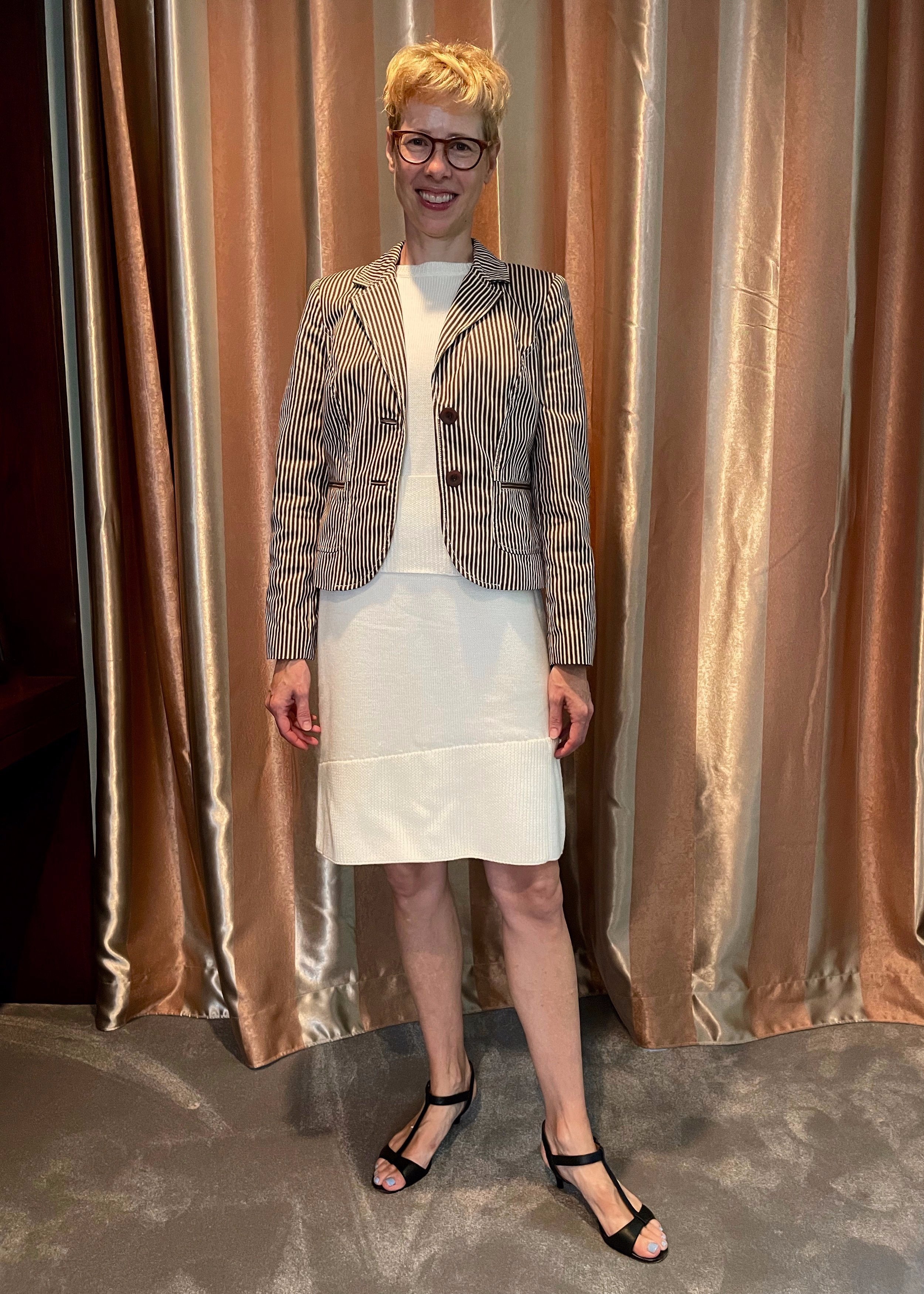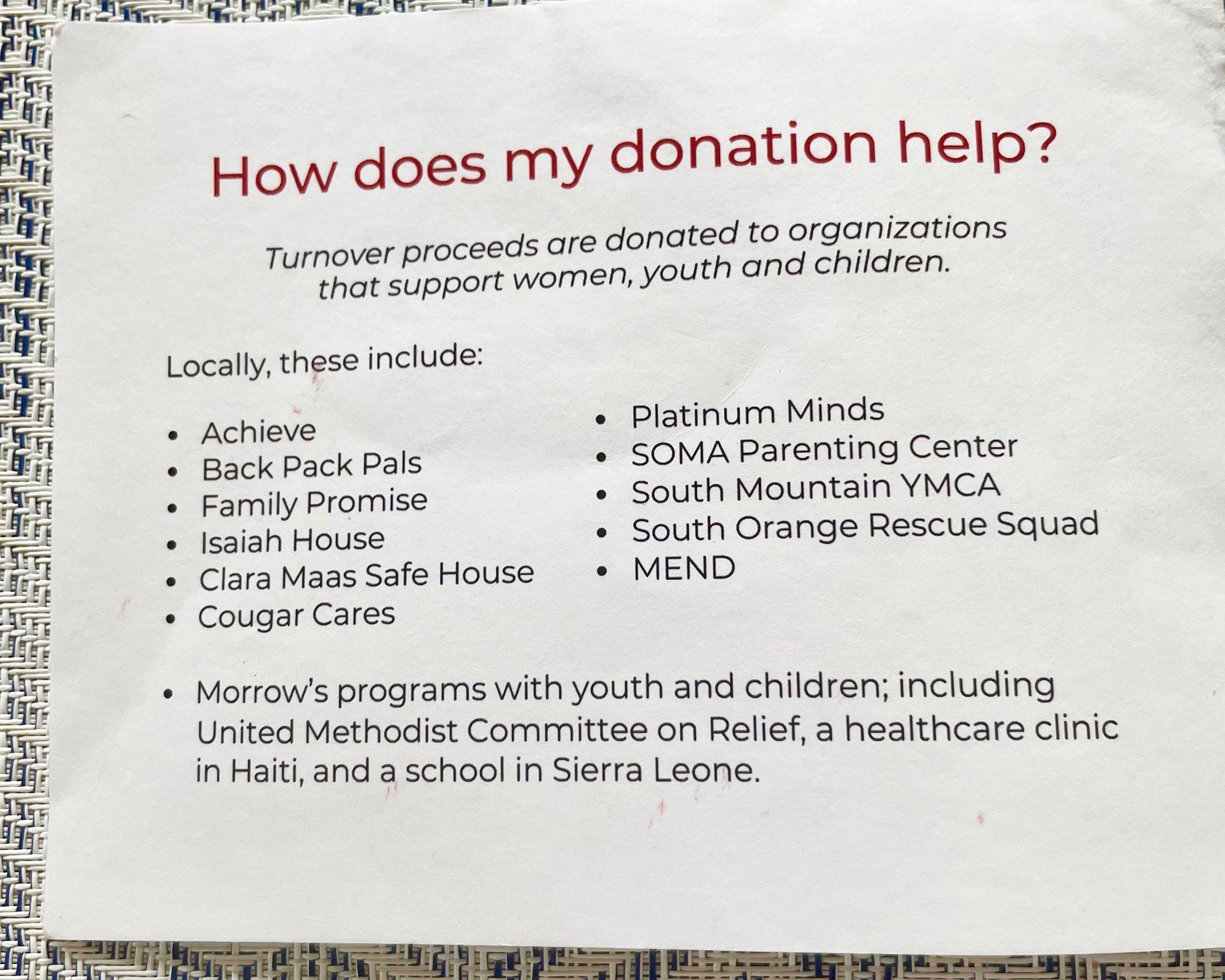A wardrobe steeped in sustainability
Buying secondhand clothing reduces the demand for new apparel, and therefore reduces the need for fossil fuels and pollutants used in manufacturing clothes.
I’m frequently overdressed. I’m that parent who puts on heels to drop off her kid at school; I’m that person who wore cocktail dresses during Covid-19 lockdown even though no one was going to see me. I love the shape, color, and texture of beautiful clothes.
But in my personal and professional life—while dressed to the nines—I am also committed to halting the global warming and pollution that threaten all aspects of life on Earth. Buying secondhand clothing reduces the demand for new apparel, and therefore reduces the need for fossil fuels and pollutants used in manufacturing clothes.
What’s more, it turns out that hunting for exquisite secondhand clothing is at least as fun to me as buying new clothes, because of the potential for jaw-dropping bargains.
My haul at the 89th annual “turnover sale” run by a Morrow Church in Maplewood, NJ this month included a snazzy striped jacket (photo below), two pairs of velvety pants, two belts, and a pair of earrings, all in excellent condition. The combined cost of these items was just $19.
Admittedly, it’s not always so easy to find secondhand clothes that I love. As Isabella Grullón Paz reported in the New York Times, the overwhelming quantity of clothing in thrift stores is not of great quality. Maybe there are gems hidden among racks of poorly designed, manufactured, and maintained clothes made of cheap synthetic materials, but a person often needs a lot of time and patience to find them.
Lacking both time and patience, I have found some secondhand shopping shortcuts. At the turnover sale, for example, there is a huge room of clothing, and then a smaller room next to it with higher-quality clothing. The snazzy jacket and luxuriously soft pants that I bought came from that smaller “boutique” room, where someone else had already done the work of sorting out the best pieces, and yet my purchases were still only $5 each. At any thrift store, check whether the better items are similarly set aside. And look at what the mannequins are wearing: store employees put the most appealing clothes on them.
Online shopping for secondhand clothes also affords some shortcuts. One luxury fashion consignment website rates each item’s quality, from “fair” to “pristine,” so I use “pristine” as a search term to make sure I’m not scrolling through items with stains or heavy wear. I also search by the names of brands I already know I like, or by high-quality materials like silk or wool.
Consumerism has long been an element of fashion, with a huge negative impact on the environment, so it is gratifying to embrace secondhand clothes as a way to enjoy an impressive wardrobe in a more sustainable way. And as a bonus, depending on where you shop, your money could also give a lift to people who need it.
That’s true when you shop at St. Mary Advocates Thrift Store in Hoboken, for example, as reported by Kimberly Redmond, one of CivicStory’s NJ Sustainability Reporting Fellows. That store’s beneficiaries include the Hoboken Shelter and the Hoboken Volunteer Ambulance, as well as scholarships related to healthcare and health education, Kim reported in TAPinto Hoboken.
The net proceeds from Morrow Church’s sale of donated clothes, housewares, books, toys, and other items are typically $65,000-$77,000 per year. The church allocates the proceeds not only to its own programs for youth and children, but also to nonprofits and charities that serve both locals and people in low-income countries with educational support, food supplies, housing, health care, and more.
Look for me in calf-length, sparkly tulle next time you’re at the library, grocery store, or roller rink, and ask me about my dress. I’ll be eager to share that I bought it secondhand for $10!




